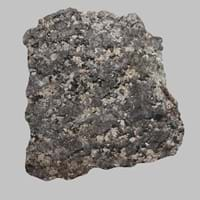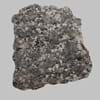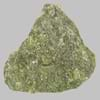Definition
Nephelinite is a fine-grained or aphanitic igneous rock made up almost entirely of nepheline and clinopyroxene (variety augite).
A carbonate rock which is matrix supported and contains over 10% allochems in a carbonate mud matrix.
Discoverer
Unknown
Unknown
Etymology
from French néphéline, from Greek nephelē
From the English mud and stone, from low German mudde and stainaz
Class
Igneous Rocks
Sedimentary Rocks
Sub-Class
Durable Rock, Hard Rock
Durable Rock, Soft Rock
Group
Plutonic
Not Applicable
Other Categories
Fine Grained Rock, Opaque Rock
Fine Grained Rock, Opaque Rock
Texture
Aphanitic
Clastic
Color
Black, Brown, Colourless, Green, Grey, White
Black, Blue, Brown, Green, Grey, Orange, Red, White, Yellow
Durability
Durable
Durable
Scratch Resistant
Yes
Yes
Appearance
Skeletal
Rough and Dull
Interior Uses
Decorative Aggregates, Homes, Interior Decoration
Decorative Aggregates, Flooring, Interior Decoration
Exterior Uses
As Building Stone, As Facing Stone, Garden Decoration, Office Buildings, Paving Stone
As Facing Stone, Garden Decoration, Roof Tiles
Other Architectural Uses
Curbing
Curbing
Construction Industry
As Dimension Stone, Cement Manufacture, Construction Aggregate, for Road Aggregate
Cement Manufacture, Construction Aggregate, for Road Aggregate, Making natural cement, Raw material for the manufacture of mortar
Medical Industry
Not Yet Used
Not Yet Used
Antiquity Uses
Artifacts, Monuments, Sculpture, Small Figurines
Artifacts, Sculpture
Commercial Uses
Creating Artwork, Soil Conditioner, Source of Magnesia (MgO)
Cemetery Markers, Pottery
Types
Peralkaline Nephelinite
Marl, Shale and Argillite
Features
Host Rock for Lead
Available in Lots of Colors and Patterns, Smooth to touch, Very fine grained rock
Archaeological Significance
Monuments
Used
Not Yet Used
Famous Monuments
Data Not Available
Not Applicable
Famous Sculptures
Data Not Available
Data Not Available
Pictographs
Not Used
Used
Petroglyphs
Not Used
Used
Formation
Nephelinite is a fine-grained, hard rock which is a type of metasomatite, essentially altered basalt. It forms with or without crystallization, either below the surface as intrusive rocks or on the surface as extrusive rocks.
Wackestone is a type of sedimentary rock formed when a river carries or transports pieces of broken rock as it flows. These particles settle down and are then compacted due to high temperature and pressure hence forming Wackestone.
Mineral Content
Clinopyroxene, Nepheline, Plagioclase
Biotite, Chlorite, Feldspar, Micas, Muscovite or Illite, Plagioclase, Pyrite, Quartz
Compound Content
Ca, CaO, Carbon, Cl, MgO
Aluminium Oxide, NaCl, CaO, Iron(III) Oxide, Silicon Dioxide
Types of Metamorphism
Contact Metamorphism
Not Applicable
Types of Weathering
Biological Weathering, Chemical Weathering, Mechanical Weathering
Biological Weathering, Chemical Weathering, Mechanical Weathering
Types of Erosion
Chemical Erosion, Water Erosion, Wind Erosion
Chemical Erosion, Sea Erosion, Wind Erosion
Grain Size
Fine Grained
Very fine-grained
Porosity
Less Porous
Highly Porous
Luster
Vitreous to Metallic
Dull
Cleavage
Imperfect
Perfect
Specific Gravity
2.4-2.9
2.2-2.8
Transparency
Opaque
Opaque
Density
2.5-3 g/cm3
2.4-2.8 g/cm3
Resistance
Heat Resistant
Heat Resistant, Impact Resistant
Deposits in Eastern Continents
Asia
Japan
Bangladesh, China, India, Russia
Africa
Rwanda, Tanzania
Ethiopia, Kenya, Morocco, South Africa, Tanzania
Europe
Not Yet Found
Austria, France, Germany, Greece, Italy, Romania, Scotland, Spain, Switzerland
Others
Hawaii Islands
Not Yet Found
Deposits in Western Continents
North America
Canada, USA
USA
South America
Colombia
Bolivia, Chile, Colombia, Ecuador, Peru, Venezuela
Deposits in Oceania Continent
Australia
Not Yet Found
New South Wales, New Zealand, Queensland, Victoria, Western Australia
All about Nephelinite and Wackestone Properties
Know all about Nephelinite and Wackestone properties here. All properties of rocks are important as they define the type of rock and its application. Nephelinite belongs to Igneous Rocks while Wackestone belongs to Sedimentary Rocks.Texture of Nephelinite is Aphanitic whereas that of Wackestone is Clastic. Nephelinite appears Skeletal and Wackestone appears Rough and Dull. The luster of Nephelinite is vitreous to metallic while that of Wackestone is dull. Nephelinite is available in black, brown, colourless, green, grey, white colors whereas Wackestone is available in black, blue, brown, green, grey, orange, red, white, yellow colors. The commercial uses of Nephelinite are creating artwork, soil conditioner, source of magnesia (mgo) and that of Wackestone are cemetery markers, pottery.










